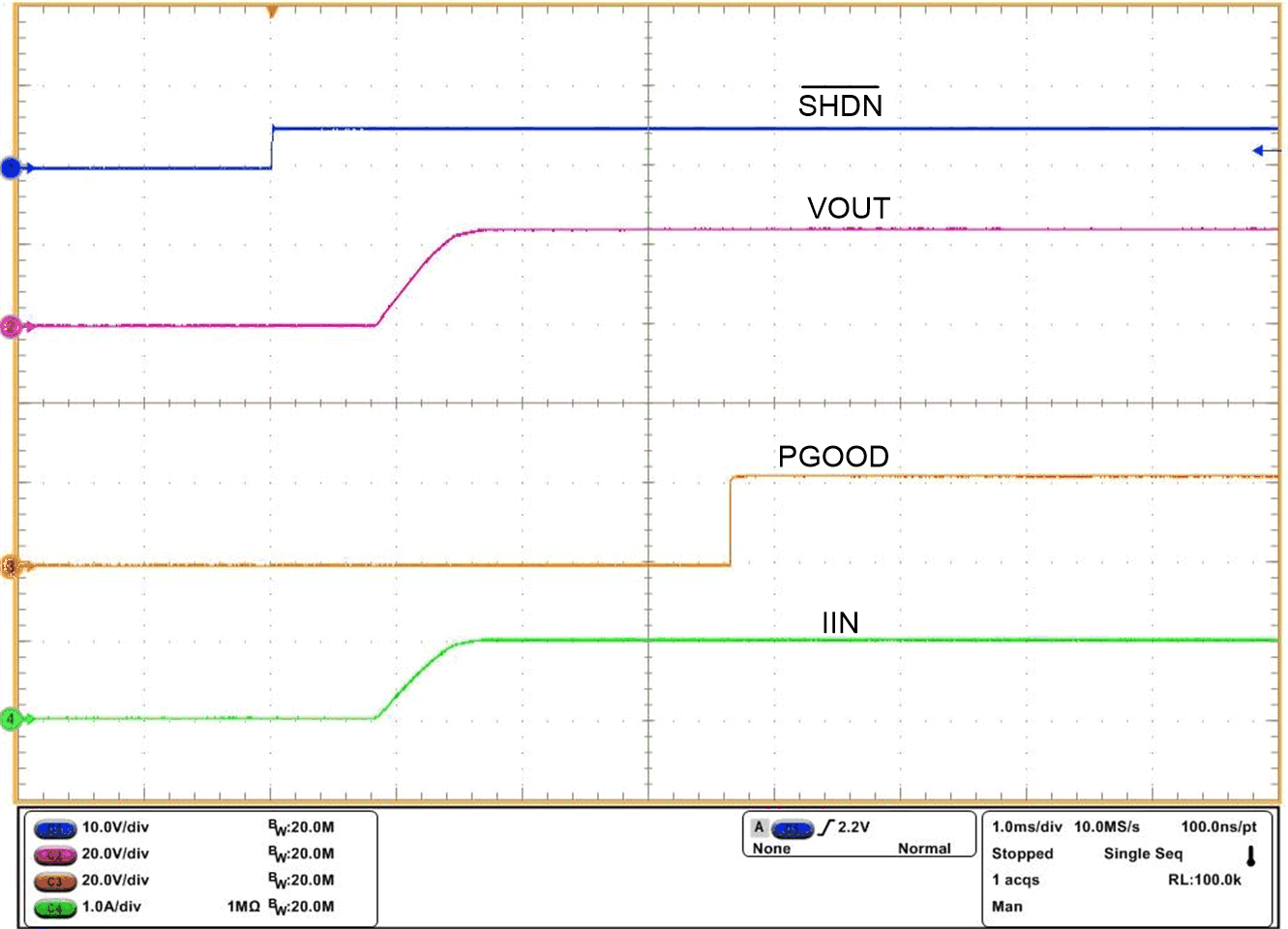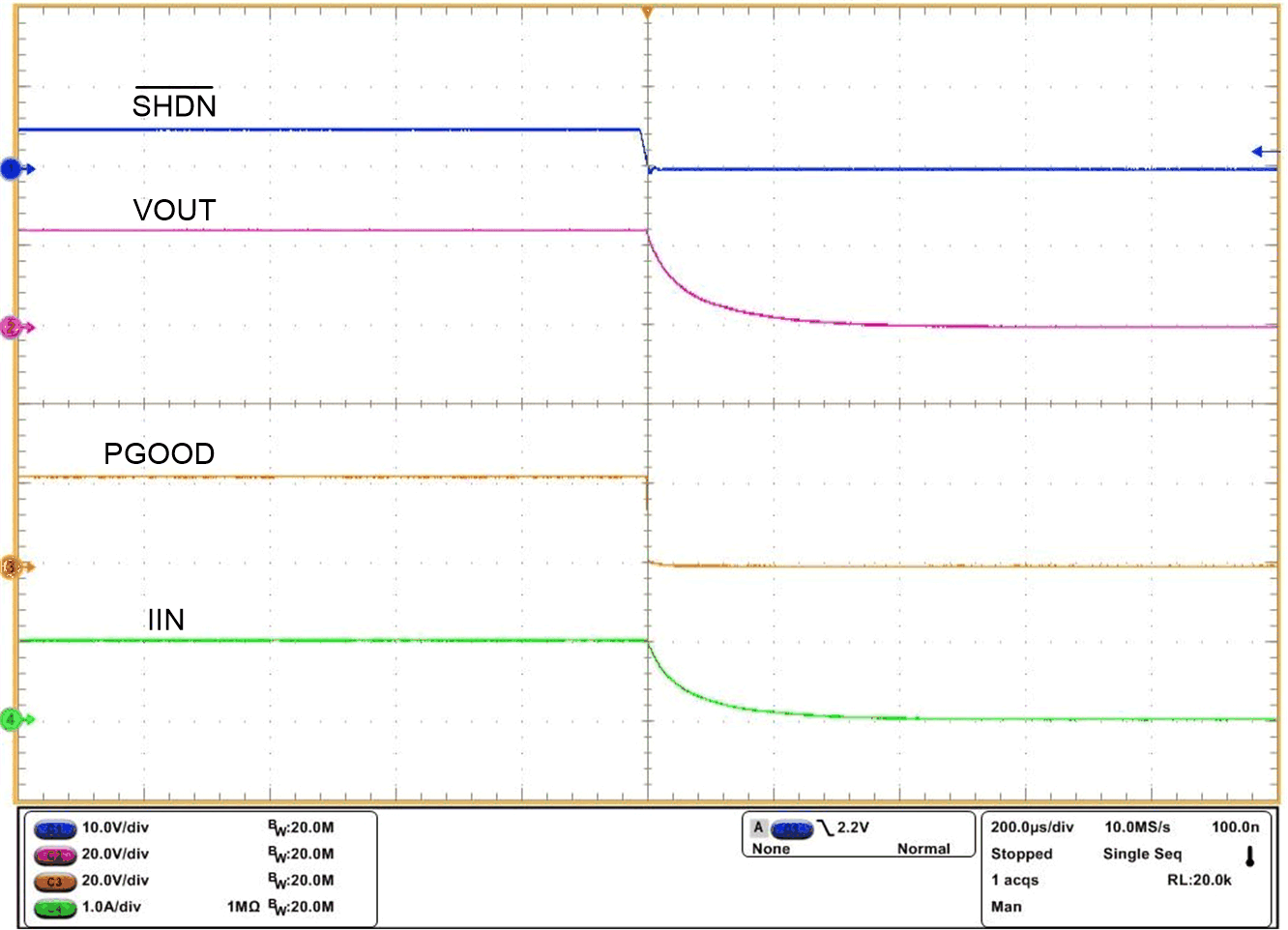ZHCSIV1F September 2018 – February 2023 TPS1663
PRODUCTION DATA
- 1 特性
- 2 应用
- 3 说明
- 4 Revision History
- 5 Device Comparison Table
- 6 Pin Configuration and Functions
- 7 Specifications
- 8 Parameter Measurement Information
-
9 Detailed Description
- 9.1 Overview
- 9.2 Functional Block Diagram
- 9.3
Feature Description
- 9.3.1 Hot Plug-In and In-Rush Current Control
- 9.3.2 Undervoltage Lockout (UVLO)
- 9.3.3 Overvoltage Protection (OVP)
- 9.3.4 Overload and Short Circuit Protection
- 9.3.5 Output Power Limiting, PLIM (TPS16632 Only)
- 9.3.6 Current Monitoring Output (IMON)
- 9.3.7 FAULT Response (FLT)
- 9.3.8 Power Good Output (PGOOD)
- 9.3.9 IN, P_IN, OUT and GND Pins
- 9.3.10 Thermal Shutdown
- 9.3.11 Low Current Shutdown Control (SHDN)
- 9.4 Device Functional Modes
- 10Application and Implementation
- 11Device and Documentation Support
- 12Mechanical, Packaging, and Orderable Information
9.3.11 Low Current Shutdown Control (SHDN)
The internal and the external FET and hence the load current can be switched off by pulling the SHDN pin below 0.8-V threshold with a micro-controller GPIO pin or can be controlled remotely with an opto-isolator device. The device quiescent current reduces to 21 μA (typical) in shutdown state. To assert SHDN low, the pull down must have sinking capability of at least 10 µA. To enable the device, SHDN must be pulled up to at least 2 V. Once the device is enabled, the internal FET turns on with dVdT mode.Figure 9-13 and Figure 9-14 illustrate the performance of SHDN control.

| VIN = 24 V | C(dVdT) = 22 nF | RLOAD = 24 Ω |

| VIN = 24 V | C(dVdT) = 22 nF | RLOAD = 24 Ω |